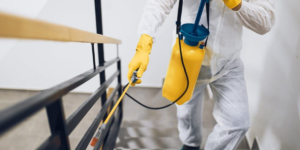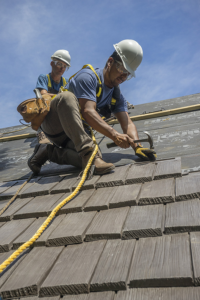When most people think of exterminators, they envision a guy in a uniform with a spray can. Pest exterminators deal with pests that spread diseases, such as bed bugs, termites, cockroaches, hornets, and fleas. Contact Exterminator Bakersfield now!
They use pesticides to kill the pests and their eggs. However, over time, these pests develop resistance to these chemicals. Pest control professionals employ methods such as Integrated Pest Management to get to the root of the problem and stop it from returning.

Many people have pest problems in their homes and must contact a home exterminator. These professionals will be able to help them remove these infestations and provide advice on how to prevent future infestations. They can offer various services, including rodent control, wasp nest removal, mosquito control, and roach control. They can even seal up the entry points of these pests, which will help prevent them from returning.
In addition to treating infestations, some exterminators may also be able to assist with other pest problems that affect a homeowner’s property, such as termites or ants. These pests can cause significant damage to the structure of a home, so they must be removed as soon as possible. Exterminators can use strong chemicals to kill these pests and treat the surrounding area to prevent them from returning.
When a person hires an exterminator, they should consider their qualifications and expertise. A professional should have the necessary skills to tackle any pest problem and to provide a fast, effective service. In addition, they should be able to communicate clearly with their clients to ensure that all the details are understood.
A good residential exterminator will be able to inspect the property and provide a comprehensive report. They will also be able to recommend the best course of action to deal with the pests, which may include using traps or spraying chemicals. A qualified exterminator should be able to offer a variety of options to suit the needs and budgets of their clients.
Another thing to look for in a professional exterminator is a satisfaction guarantee. This will give the customer peace of mind knowing that if the pests come back, they will be able to get their money back. This will give the customer confidence in hiring the exterminator, and it will also make them feel better about their decision.
It is also important to note that exterminators should not be allowed to enter apartments that do not have pests. This is because it would be an invasion of privacy and could expose other tenants to harmful chemicals. It is also a waste of time and resources.
Commercial
Whether you run a business or own a home, pests can be a big problem. Luckily, professional exterminators offer a variety of services to help you get rid of unwanted guests. They can also offer advice on how to prevent future infestations. These services can include rodent extermination, fly extermination, and bed bug extermination. They can also provide commercial pest control.
Insect exterminators are trained to handle a wide range of pests, including ants, bed bugs, and termites. They can use chemicals, baits, and traps to eliminate these insects. They can also assist with preventing rodent infestations by sealing any entry points into the home or business. Some exterminators specialize in specific pests, such as mice and rats. This is because they need to be able to work in tight spaces, such as basements and attics.
Another difference between exterminators and pest control specialists is that exterminators usually focus on eliminating existing pests. They use intense insecticides and other commercial sprays to kill the pests. However, pest control specialists try to prevent the growth of new pests by using non-toxic and odorless treatments.
Pest control services also usually come with a satisfaction guarantee, while exterminators don’t. This is because exterminators rely on toxic chemicals to remove the pests from the property, but they don’t address the root cause of the problem.
The price of an exterminator depends on the type and size of the service area. In general, larger homes and buildings are more expensive to treat than smaller ones. This is because the exterminator needs to spend more time checking every corner and crevice. In addition, larger properties may require more specialized equipment and materials. Lastly, the price of an exterminator can also depend on the type and severity of the infestation. For example, a large infestation of termites will cost more than an infestation of flies. A reputable exterminator should be honest about the costs of their services and provide an accurate estimate. They should also be willing to answer any questions that a customer may have.
Industrial
An exterminator is a professional who is trained to eliminate pests from homes, schools, hospitals, and other commercial properties. They use chemicals and tools to eradicate pests such as cockroaches, termites, rats, bees, and mice. Although their job is challenging, it is rewarding because they help prevent health issues caused by these pests. They also offer temporary support and relief for homeowners who are suffering from pest infestations.
The first step to becoming an exterminator is completing a bachelor’s degree in a relevant subject, such as biology or entomology. You must also complete an internship to learn the skills and knowledge required for the job. After this, you must pass a background check and drug test. In addition, you should be licensed and insured.
Getting started as an exterminator can be difficult, but there are many resources available to help you get started. Some of these resources include online training and certification courses. In addition, there are many books and guides that can help you become an exterminator. You should also consider joining a professional association. These associations can provide you with support, education, and networking opportunities.
Exterminators are usually paid on a per-service basis. The cost of a service is determined by the type and severity of the pest problem, as well as the size of the home or business. In general, the more pests you have in your home or business, the more expensive the service will be.
Insect exterminators use chemicals, baits, and traps to control insects such as cockroaches, ants, bed bugs, and wasps. Rodent exterminators are experts in controlling mice, rat, and squirrel infestations using traps and other methods. Other services that an exterminator may offer include sanitation evaluations, hygienic cleaning recommendations, and repairing structural problems that contribute to pest infestations.
One of the biggest differences between an exterminator and a pest control specialist is that exterminators focus on eliminating the pest infestation while pest control specialists look for long-term solutions to keep the pests away. Exterminators typically rely on pesticides to destroy the pests but these chemicals can be dangerous for humans and pets.
Warehouse
Warehouse facilities are attractive environments for pests, with plenty of space to roam and access food and water sources. Rodents, cockroaches, flies, birds, and beetles are common warehouse pests. Pests can cause a variety of problems, including product damage, product contamination, and structural damage. Infestations can also disrupt operations and divert attention away from more important tasks.
Integrated Pest Management (IPM) methods are the best way to prevent warehouse pest infestations. These techniques include avoiding moisture, preventing food sources, and using proper sanitation practices. The IPM approach reduces reliance on toxic chemicals and focuses more on prevention than extermination.
In addition to causing product damage, warehouse pests can create unsanitary conditions that may violate health and safety regulations. For example, mice droppings can contaminate foodstuffs, and rats can gnaw on electrical wires and packaging. They can also spread diseases, such as salmonella and hantavirus, by transmitting pathogens through their urine, saliva, or droppings.
Warehouse employees should be trained to recognize the signs of a pest problem. This helps them to take action quickly and report issues to a pest control company. It’s also important for employees to understand how pest control products are used and to follow safety protocols when applying them.
A pest problem in a warehouse can disrupt operations and divert attention from more important duties. It can also cost a warehouse money by resulting in fines, shutdowns, and lost customers.
To keep pests out of a warehouse, staff must clean and organize storage areas regularly. This includes reducing potential hiding spots by removing piles of debris and ensuring that areas are free from food waste. It’s also a good idea to use a rewards system for staff who are proactive about reporting pest activity.
For companies that store edible goods in a warehouse, a pest infestation can be disastrous. Rodents and cockroaches can contaminate food products, rendering them inedible. A roach or rodent drop can also ruin wooden pallets, which are often used in warehouses to transport foodstuffs. Termite infestations can be equally devastating to warehouse operations, as these pests destroy and degrade the wooden materials that are essential for building and storing goods.







